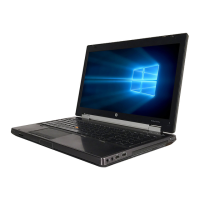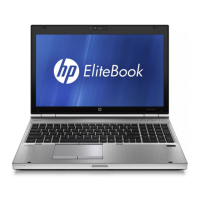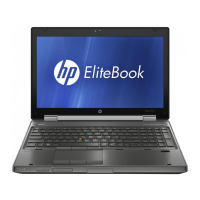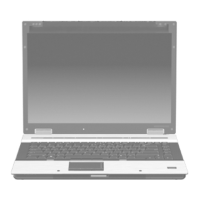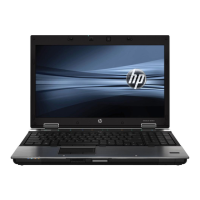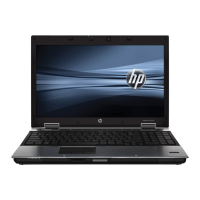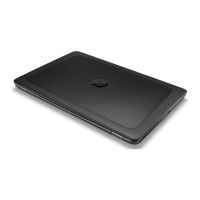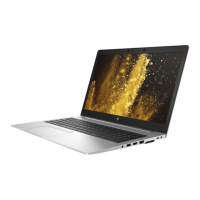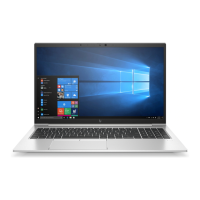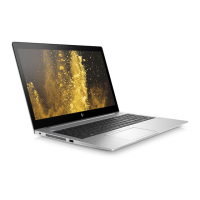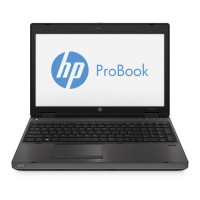
Do you have a question about the HP EliteBook 8570p and is the answer not in the manual?
| Bus type | DMI |
|---|---|
| Stepping | L1 |
| Tjunction | 105 °C |
| Processor cache | 3 MB |
| Processor cores | 2 |
| Processor model | i5-3230M |
| System bus rate | 5 GT/s |
| Processor family | Intel® Core™ i5 |
| Processor series | Intel Core i5-3200 Mobile series |
| Processor socket | BGA 1023 |
| Processor threads | 4 |
| Processor codename | Ivy Bridge |
| Processor frequency | 2.6 GHz |
| Processor cache type | Smart Cache |
| Processor lithography | 22 nm |
| Processor manufacturer | Intel |
| Processor front side bus | - MHz |
| PCI Express slots version | 3.0 |
| Processor boost frequency | 3.2 GHz |
| Processor operating modes | 64-bit |
| ECC supported by processor | No |
| PCI Express configurations | 1x16, 2x8, 1x8+2x4 |
| Thermal Design Power (TDP) | 35 W |
| CPU multiplier (bus/core ratio) | 26 |
| Maximum number of PCI Express lanes | 16 |
| Motherboard chipset | Intel® QM77 Express |
| Internal memory | 4 GB |
| Memory clock speed | 1600 MHz |
| Internal memory type | DDR3-SDRAM |
| Maximum internal memory | - GB |
| HDD speed | 7200 RPM |
| HDD interface | SATA |
| Storage media | HDD |
| Optical drive type | DVD Super Multi |
| Card reader integrated | Yes |
| Total storage capacity | 500 GB |
| Number of HDDs installed | 1 |
| Display diagonal | 15.6 \ |
| Display resolution | 1366 x 768 pixels |
| Native aspect ratio | 16:9 |
| On-board graphics card ID | 0x166 |
| Discrete graphics card model | Not available |
| On-board graphics card model | Intel® HD Graphics 4000 |
| On-board graphics card family | Intel® HD Graphics |
| On-board graphics card base frequency | 650 MHz |
| On-board graphics card dynamic frequency (max) | 1100 MHz |
| LightScribe | - |
| Intel segment tagging | Enterprise |
| Audio system | SRS PS PRO |
| WWAN | Not installed |
| Data network | Not supported |
| Wi-Fi standards | 802.11a, 802.11b, 802.11g |
| Bluetooth version | 4.0 |
| Cabling technology | 10/100/1000Base-T(X) |
| Ethernet LAN data rates | 10, 100, 1000 Mbit/s |
| Charging port type | DC-in jack |
| USB 2.0 ports quantity | USB 2.0 ports have a data transmission speed of 480 Mbps, and are backwards compatible with USB 1.1 ports. You can connect all kinds of peripheral devices to them. |
| eSATA/USB 3.2 Gen 1 (3.1 Gen 1) ports quantity | 0 |
| Pointing device | Touchpad |
| Operating system installed | Windows 8 Pro |
| Form factor | Clamshell |
| Product type | Laptop |
| Product color | Silver |
| Country of origin | China |
| Processor code | SR0WX |
| Processor ARK ID | 72056 |
| Processor package size | 31 x 24 (BGA1023) mm |
| Supported instruction sets | AVX |
| Intel Identity Protection Technology version | 1.00 |
| Battery capacity | 62 Wh |
| Battery life (max) | 8.25 h |
| Number of battery cells | 6 |
| AC adapter power | 65 W |
| AC adapter frequency | 50 - 60 Hz |
| AC adapter input voltage | 100 - 240 V |
| Sustainability certificates | EPEAT Gold, ENERGY STAR |
| Depth | 251 mm |
|---|---|
| Width | 374 mm |
| Height | 34 mm |
| Weight | 2610 g |
Lists available Intel processors for both notebook models, including core count and clock speed.
Details the discrete and internal graphics options available, including chipsets.
Describes the specifications of the 15.6-inch display panels, including resolution and backlight.
Outlines memory module specifications, speeds, and supported configurations.
Details supported hard drive types, sizes, interface, and speeds.
Details wireless capabilities including WLAN and WWAN modules and formats.
Identifies and describes the various external ports on the computer and their functions.
Describes keyboard features, gesture support, and pointing device functionalities.
Details security features like TPM, smart card reader, and encryption options.
Lists preinstalled operating systems and their configurations for both models.
Identifies and describes the display and its components like WLAN antennas and webcam.
Details the function and location of power button, touchpad on/off, and fingerprint reader.
Describes the keyboard layout, function keys, fn key, and numeric keypad functions.
Explains the function of various indicator lights on the computer (e.g., power, caps lock, wireless).
Details the TouchPad, pointing stick, and their respective buttons and zones.
Identifies components located on the left side of the computer, including USB, ExpressCard, and media reader.
Identifies components located on the right side, including audio jacks, USB 3.0, and upgrade bay.
Identifies components located on the bottom, such as battery release, docking connector, and vents.
Explains the importance and location of the service tag for ordering parts.
Provides an exploded view and part numbers for major computer components.
Details the individual parts that make up the display assembly, like bezel and hinges.
Lists various mass storage devices (HDD, SSD, Optical Drive) and their specifications.
An alphabetical listing of spare parts by their part number for easy reference.
Outlines necessary tools and general considerations for component replacement.
Gives specific instructions and cautions for handling cables and connectors to prevent damage.
Provides detailed precautions for handling computer drives (HDD, SSD, Optical) to prevent damage.
Explains the importance of grounding to prevent ESD damage to sensitive components.
Details the procedure for removing and replacing the computer battery.
Describes the process for removing and replacing the service cover for internal access.
Outlines the steps for removing and replacing the computer's hard drive.
Details the procedure for removing and replacing memory modules.
Details the procedure for removing and replacing the WLAN module.
Explains how to remove and replace the system board, including component transfer.
Provides instructions for removing and installing the processor, including thermal material.
Details the process for removing and replacing the entire display assembly.
Provides steps for removing and installing the keyboard.
Covers Computer Setup and diagnostics procedures specifically for Windows 8.
Covers Computer Setup and diagnostics procedures specifically for Windows 7.
Covers Computer Setup and diagnostics procedures for SuSE Linux.
Lists the overall physical and performance specifications of the computer, including dimensions and weight.
Details the technical specifications of the 15.6-inch display, including resolution and brightness.
Provides technical specifications for the hard drives, including capacity and speed.
Covers backup and recovery procedures for Windows 8, including tools and methods.
Covers backup and recovery procedures for Windows 7, including tools and methods.
Covers backup and recovery procedures for SuSE Linux, including tools and methods.
Lists general requirements for power cord sets applicable globally.
Details specific power cord requirements by country/region and certification.
Provides information on battery disposal and HP's recycling initiatives.
